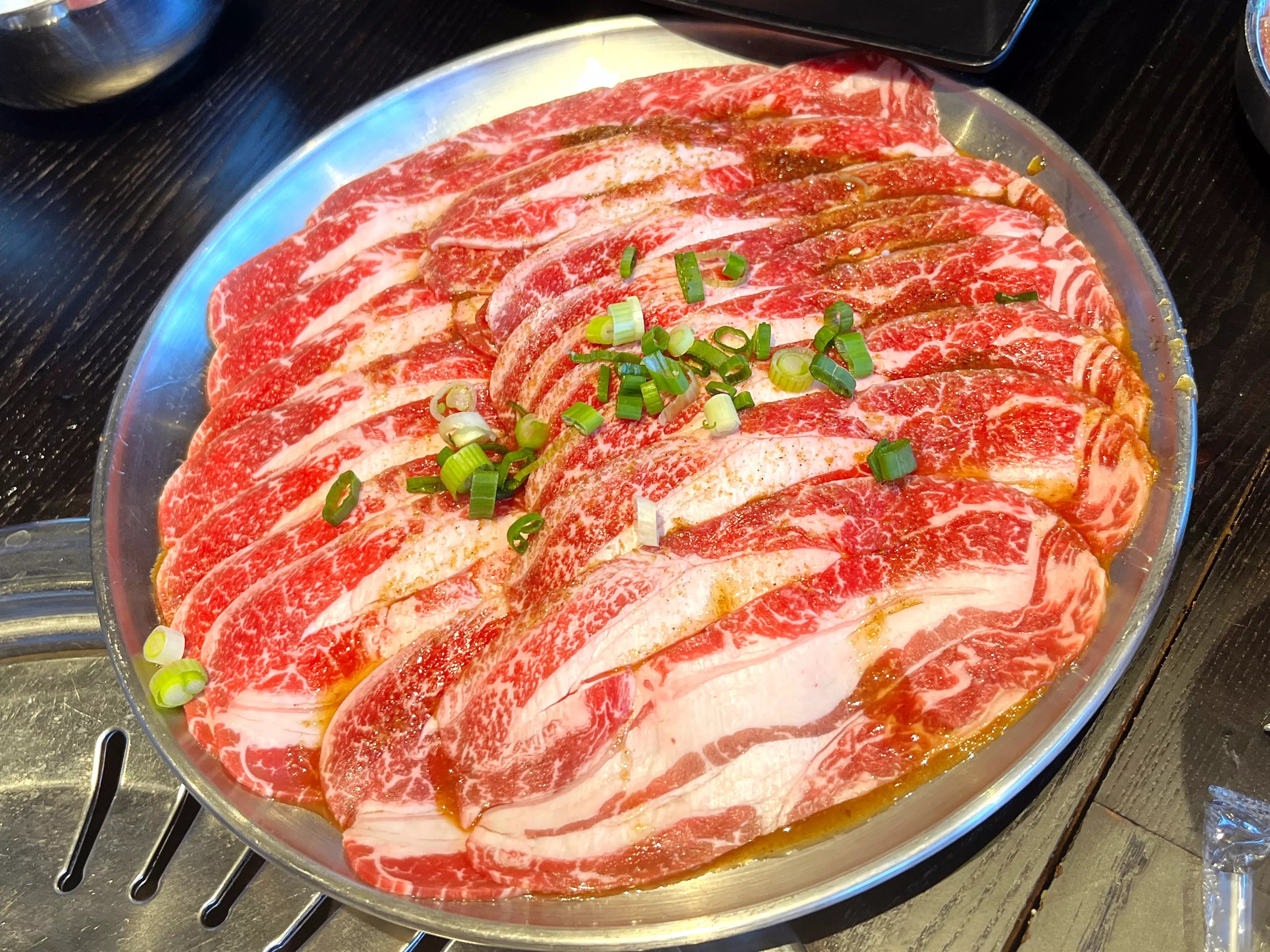
Dominic Armato

Audio By Carbonatix
Forget what they told you in high school. Phoenix’s gateway drug is meat.
Oh, sure, we pay lip service to vegetables and have grown to appreciate fish. But nine times out of ten, if there’s an animal-based way to approach a cuisine, Phoenix diners will zero in on it like a meat-seeking missile.
Take Korean food.
Circa 2010, Korean cuisine in Phoenix consisted of venerable traditionalists Hodori and Chodang and a handful of hole-in-the-wall joints flying well under the radar of anybody outside the Korean community and the food-obsessed.
Then, sometime around 2017, the number of Korean restaurants in Phoenix suddenly exploded. But it wasn’t tofu soup, cold noodles, or kimchi pancakes that captured everybody’s attention. So what was it that catapulted Korean fare straight into the fluffy gut of the Arizona mainstream?
Korean barbecue. Big, heaping helpings of meat, in endless supply, loudly sizzling on a grill right in front of you. That’s the kind of Korean food Phoenix could relate to.
Look, I get it. Some folks just aren’t comfortable trying tteokbokki, soondubu, and naengmyeon until the third date. Grilled meat, on the other hand, is the kind of universal solvent that can wash away any Phoenician’s inhibitions.
Sean Soohun Kim knows this, which is partly why he launched Smoking Tiger Korean BBQ into an increasingly crowded market. But unlike many local Korean restaurateurs, Kim isn’t just hopping on the bandwagon.
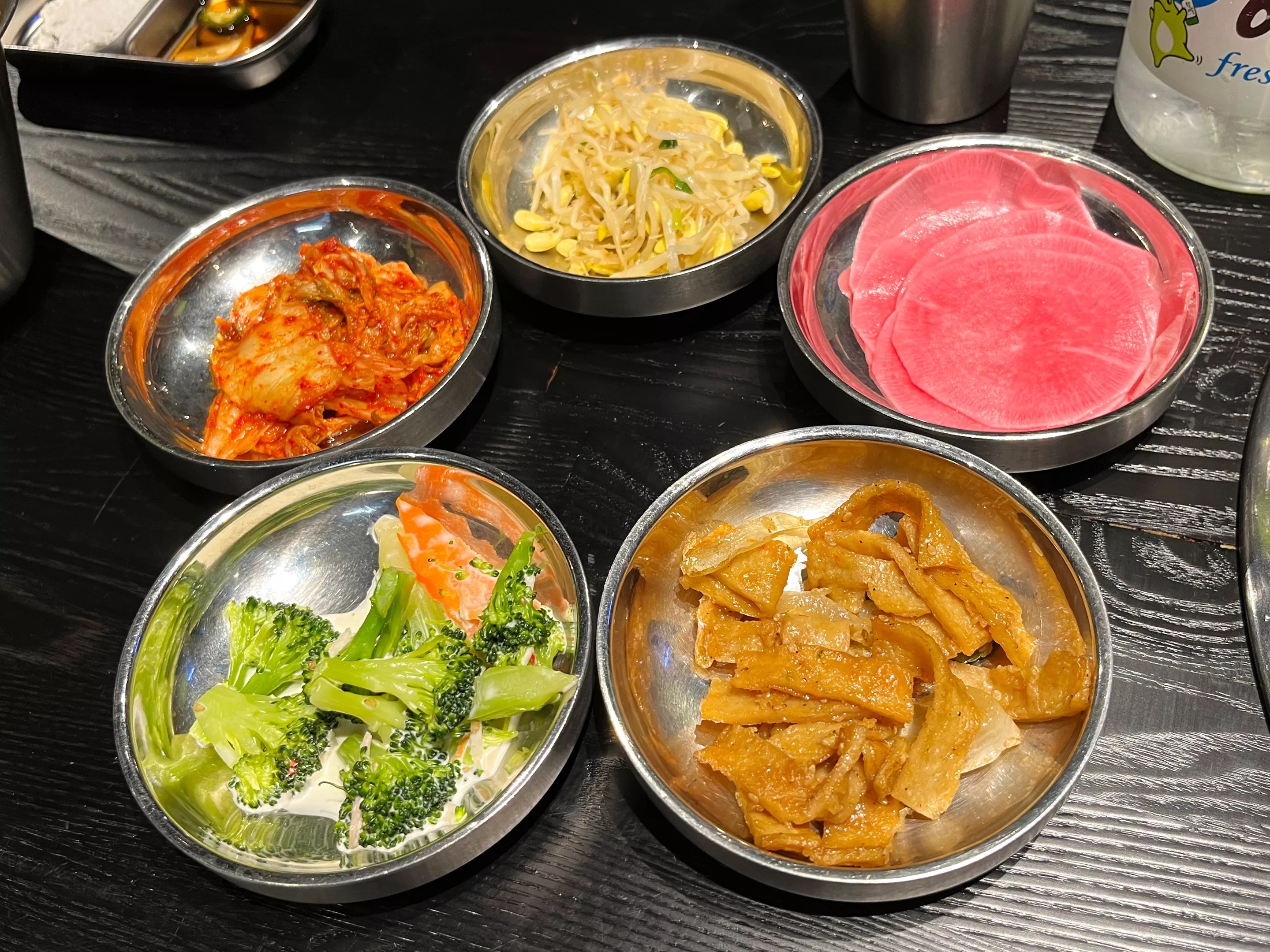
Smoking Tiger’s banchan are simple but fresh and well-prepared.
Dominic Armato
Hodori’s History
You might not know Kim’s name, but you probably know his first restaurant. Kim owns and operates Hodori, the grande dame of Phoenix’s Korean restaurant scene and the polar opposite of the buzzy new wave of hip KBBQ joints. Rather, it’s a throwback to the casual immigrant restaurants of yore, an unpretentious, no-frills family restaurant serving hearty, homestyle food that’s more concerned with embracing tradition than it is with proselytizing a mainstream clientele.
Notably, Hodori’s lengthy menu is loaded with soups, stews, noodles, stir-fried seafood, and all manner of Korean foodstuffs that aren’t grilled on the table in front of you because, contrary to popular belief, not all Korean restaurants have tabletop grills.
And yet, to his credit, Kim is considerably less cynical about Phoenix’s carnivorous proclivities than I am.
“I think that’s how it started here, so many restaurants serving Korean barbecue. For Asian restaurant owners, I think it’s a good thing,” Kim says. “[Barbecue] is a start, and I think that’s a really good thing for us.”
So, after working at Hodori for more than a decade and owning it for another four, Kim took the backdoor route to Phoenix’s favorite style of Korean food, opening his second restaurant – Smoking Tiger – in December.
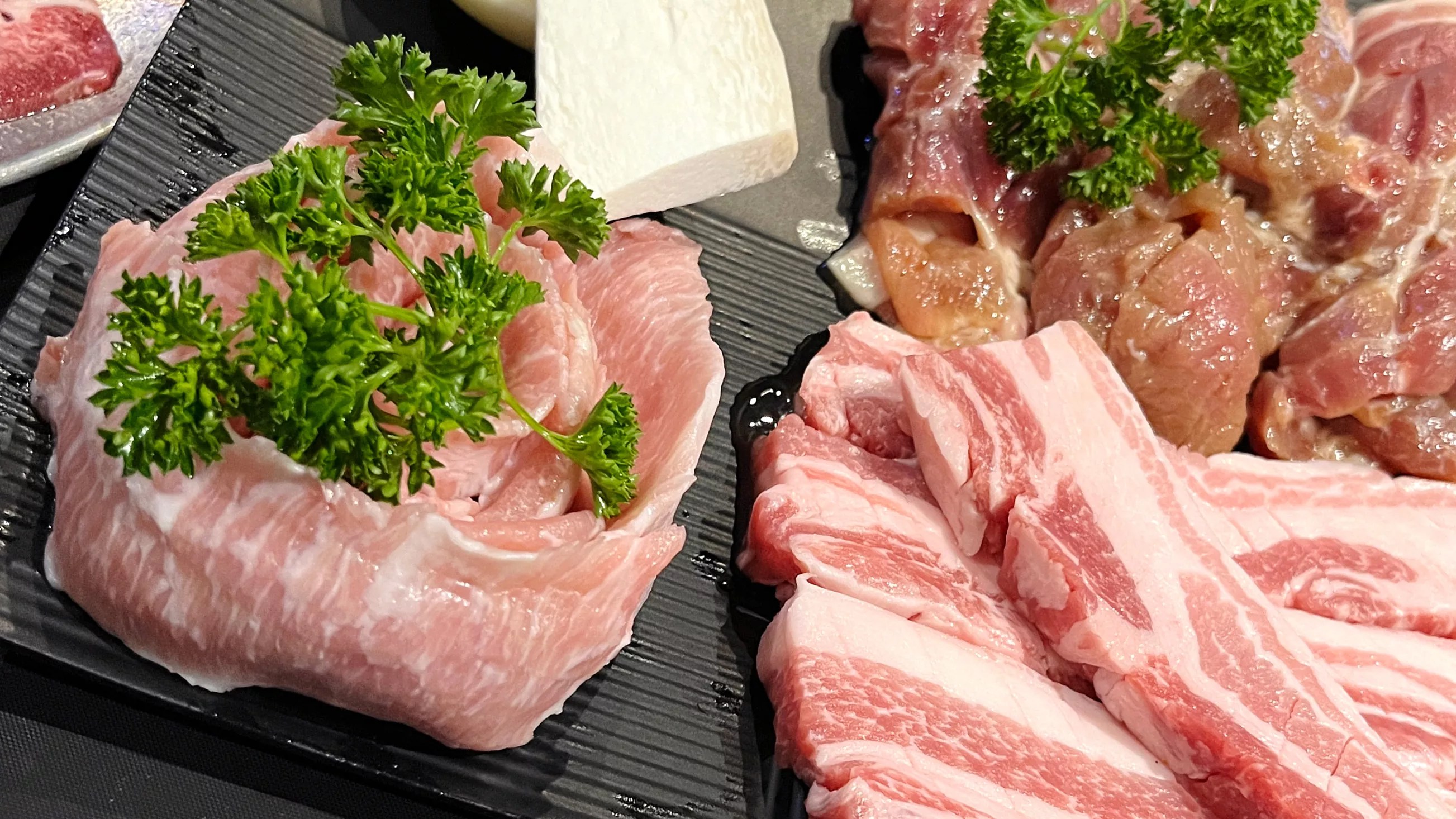
The pork combo at Smoking Tiger includes items like pork jowl, belly, and shoulder.
Dominic Armato
Smoking Tiger is a latecomer to its particular subgenre. Korean BBQ restaurants are multiplying like Starbucks these days, and as a local dining critic and senior food geek, it is my sacred duty to remind you at every opportunity that there is so much more to Korean cuisine than grilled beef with a sizzled pork chaser.
But herein lies the critic’s dilemma. Just when I want to get all huffy about the meatification of every cuisine under the sun, I drop into a place like Smoking Tiger and a slab of marinated short rib hits the griddle with a sputter and snap, the scent of singed garlic and ginger intermingles with thick, luscious meat smoke, and damnit, I get socked right in the giblets, same as you.
So if your interest in Korean cuisine is limited to barbecue restaurants, at least let me steer you to one of the better ones. Those who hope to find Hodori 2.0, however, should check their expectations.
“I see people, and if they want to treat somebody nice, they go to somewhere else, other than Hodori, because it’s very family cafeteria style,” Kim says. “And I was thinking maybe if I open something nice, nice interior, nice vibe, then they can bring their guests here. That was the idea. Something very authentic, very high-end, very nice, so that you could treat somebody there.”
Far from Hodori’s homestyle mom-and-pop charm, Smoking Tiger joins the ranks of Phoenix’s more lively, upscale Korean restaurants. This isn’t the SoCal neon club vibe of Tempe’s Gen Korean BBQ House nor the pure ear-shattering volume of Mesa’s Hanshin Pocha, but Smoking Tiger glimmers and thumps nonetheless, clad in black and silver and polished to a lustrous shine.
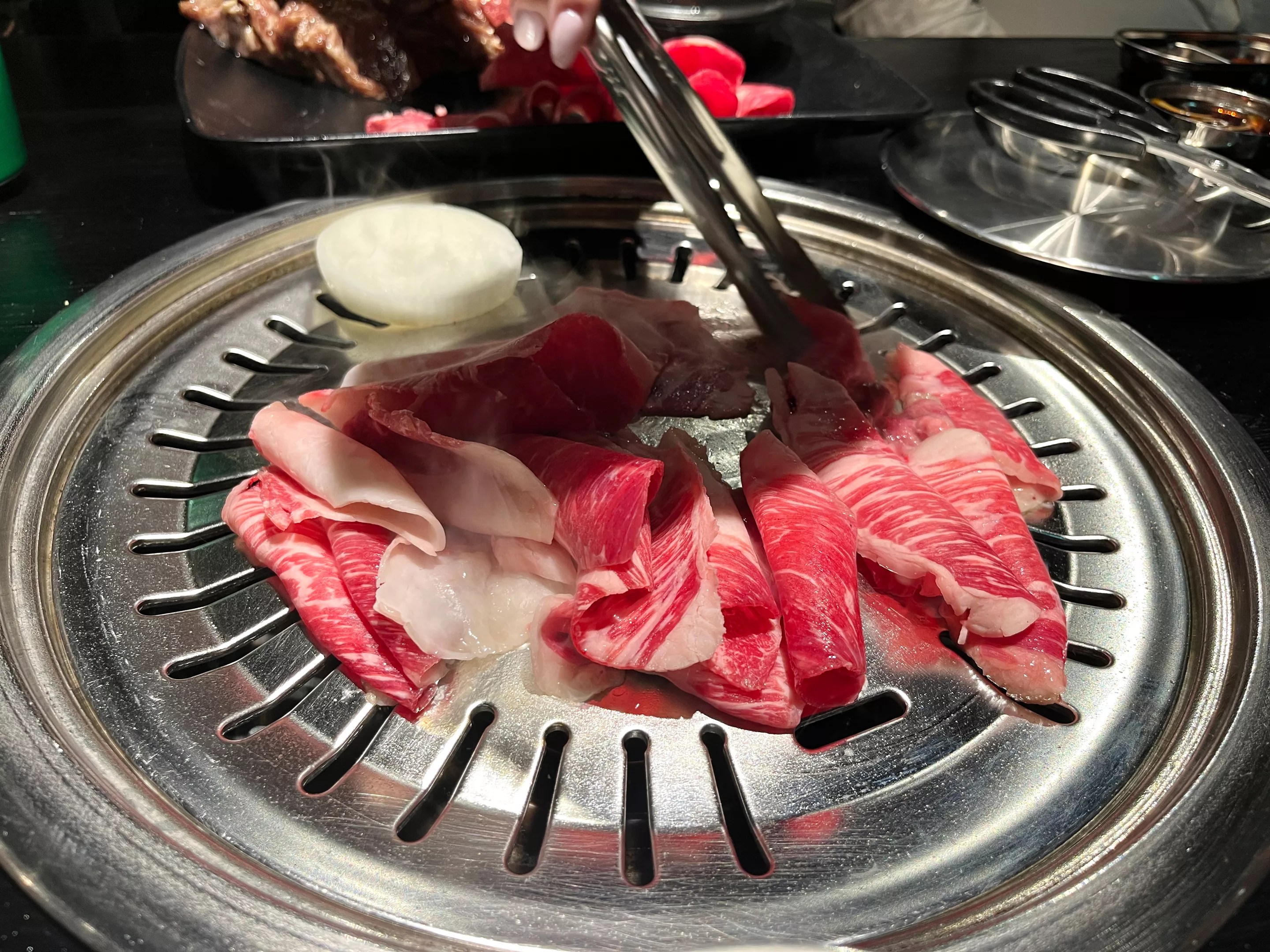
Beef brisket starts to cook on a grill at Smoking Tiger Korean BBQ.
Dominic Armato
Quality Over Quantity
General manager Leah Heo joins Kim in making the trek over from Hodori, and her staff certainly aspires to a higher level of service than your typical KBBQ, even if they still need some time to even out the edges.
To separate itself from the crowd, Smoking Tiger joins a minority of KBBQ places, such as Sizzle and Jin BBQ, that place the emphasis on quality cuts rather than an all-you-can-eat format where guests stuff their gullets with as many tiny, cheap plates as they can in 90 minutes. And while the cuts at Smoking Tiger can be a bit inconsistent, Kim says he’s spending nearly $2,500 per case of prime Wagyu, and I’m inclined to believe it.
Overplayed or not, galbi is a benchmark, and Smoking Tiger’s is handled with enough skill to justify the price tag. Rather than the snippets of trim and bony “L.A.-Style” flanken cut of the all-you-can-eat joints (not that there’s anything wrong with bones!), unrolling this hefty rib reveals a long, thick curtain of meat that’s beautifully marbled, juicy, and sweet without being cloying.
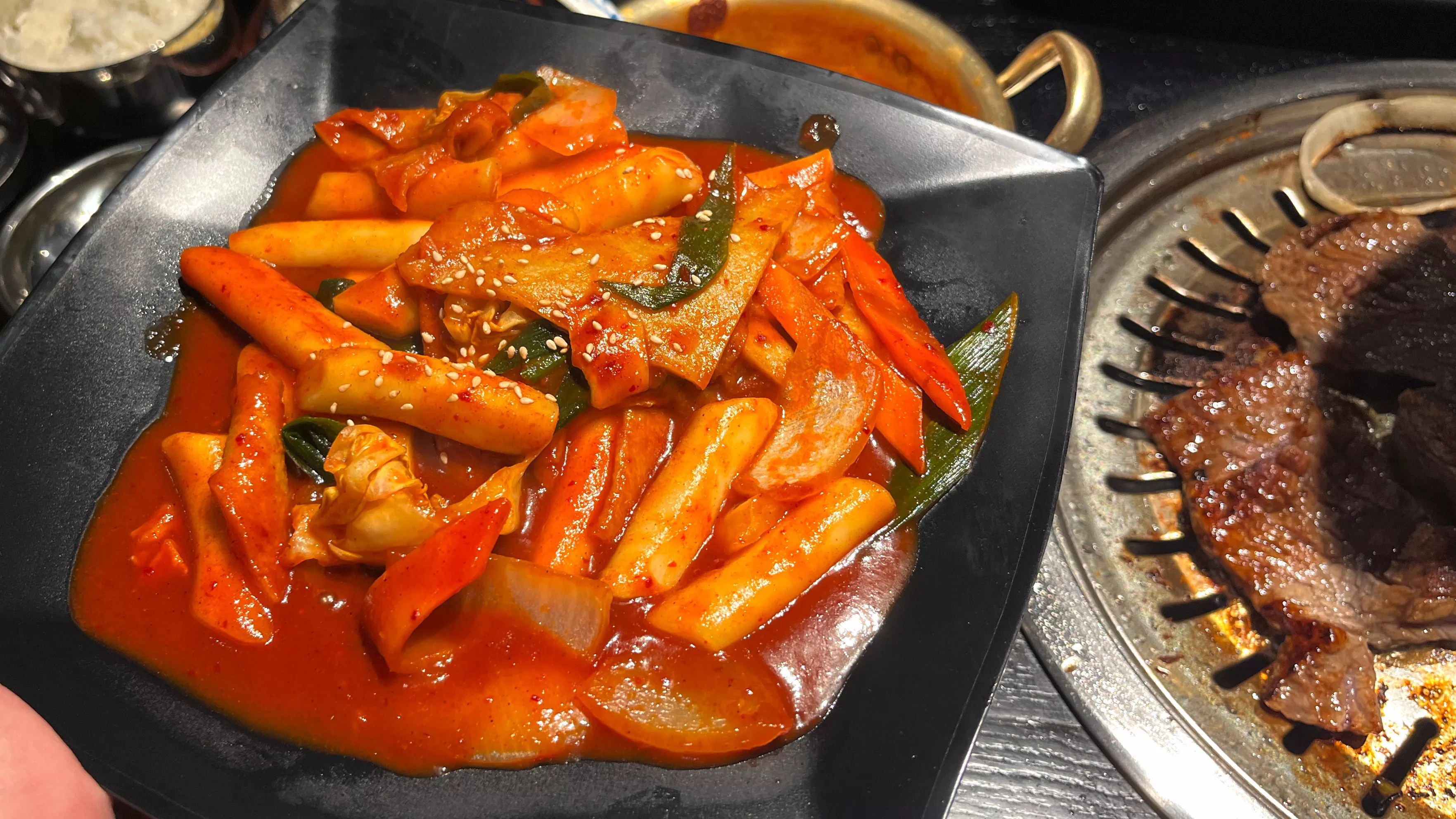
Smoking Tiger’s dukboki are a good rendition of supple rice cakes bathing in gochujang sauce.
Dominic Armato
More impressive is the bulgogi, slices of sweet, marinated ribeye cut thicker than you’d expect, the atypical heft lending a better balance of meat to marinade and preventing the beef from turning into shredded kibble on the griddle. A personal favorite, however, might be the beef belly – similarly sweet but with a pungent, aromatic depth redolent of five spice and ribbons of bonus fat that singe and crisp as they crackle and smack on the grill.
While the beef is strong, the pork is not as consistently sharp. Thinly shaved spicy pork belly – heartbreak! – arrives precooked, and you’re encouraged to crisp it on the grill if you like. Unfortunately, that mostly just leaves you with overcooked pork. The jowl and shoulder are workmanlike. They’re a little dull on their own and best wrapped up in lettuce with ssamjang – an intensely seasoned fermented bean paste – and a bit of pickly banchan, all manner of diminutive side dishes that arrive at the table, gratis.
A different, unseasoned version of the pork belly, however, is one of the menu’s highlights – cut thick like a steak, scored in a crosshatch pattern to lend some texture, and brimming with luscious, sweet, creamy fat.
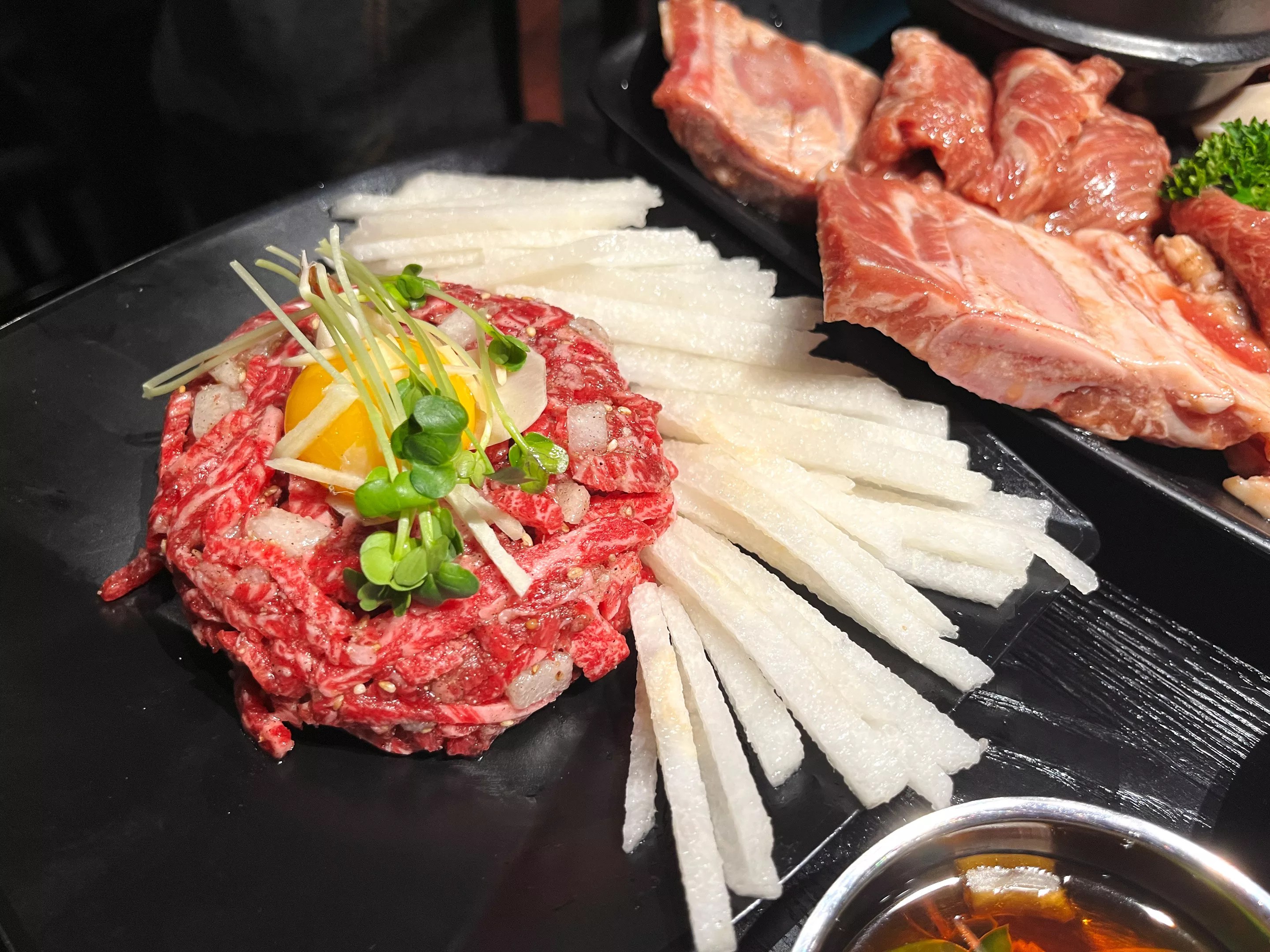
Smoking Tiger offers an unusually good yukhoe — Korean beef tartare with crisp Asian pear.
Dominic Armato
If you’re into intestines, availability seems to be an issue at Smoking Tiger. Bad luck, perhaps, but I’ve only managed to wrangle up the small intestines on one visit. And if you’re not into intestines, this probably isn’t the place to start. I never miss a chance to introduce diners to gateway offal, but taking on the texture and intense funk of Smoking Tiger’s is jumping into the deep end of the pool.
Those who are up for some raw beef, however, will find an excellent rendition of yukhoe – Korean beef tartare. Sliced into thick matchsticks and served icy cold, it’s dressed with honey, sesame oil, and egg yolk and accompanied by crisp batons of Korean pear. Here’s a dish that might win over some neophytes, and it’s the one I’ll come back for when it’s 115 degrees outside.
Best Supporting Role
We all know why you came, but please, do yourself a favor and give the rest of the menu a gander, too. The supporting dishes are some of Smoking Tiger’s best, starting with a dynamite seafood pancake. One of my favorites in town, this is an extra robust and crispy variety, strewn with griddled green onions and loaded with sweet shrimp and tender squid.
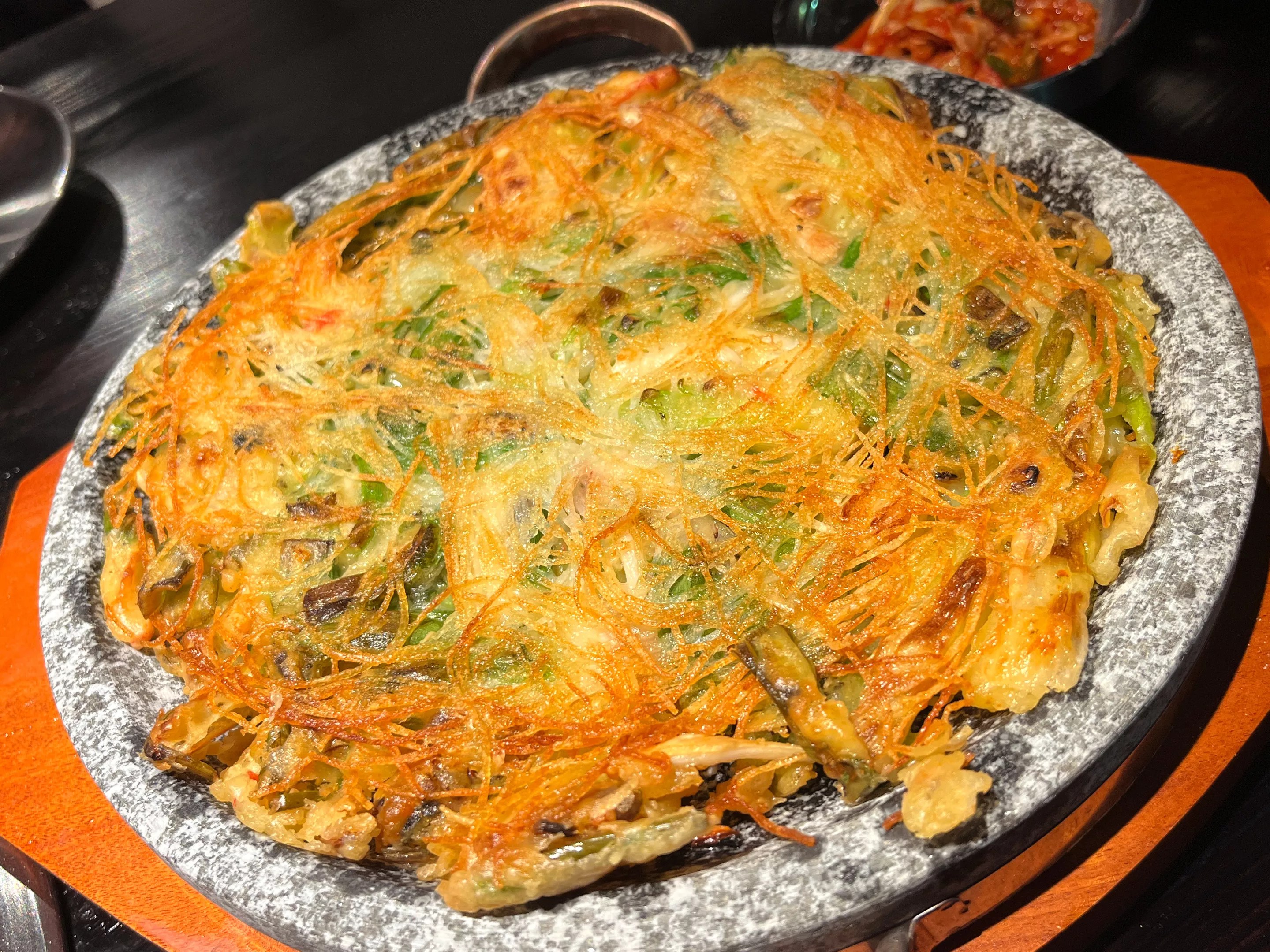
Smoking Tiger makes an excellent seafood pancake, big and crispy, filled with tender shrimp and squid.
Dominic Armato
I wish I could say the same of the spicy squid stir-fry, which spent too much time in the wok and might as well have been vulcanized. But the toppoki (Dukboki? Tteokbokki?) is a great pick, however you Anglicize it – slippery and supple cylindrical rice cakes swimming in a deep red sauce of fermented chile paste.
Corn cheese, speaking broadly, holds the dubious distinction of somehow working magic with canned corn, and this one’s an unusually good specimen, served bubbling hot on a cast iron plate smothered with mayonnaise, mozzarella, and plenty of sweet onion.
And the bibimbap – a chaotic tossed mix of rice, meat, and vegetables – is pretty much my platonic ideal of the form. I let it rest for nearly 10 minutes, hoping the rice would develop a golden, crunchy crust. Indeed it did, and when I finally added the sauce to mix it up, the granite platter was still sizzling hot, lending a nice, smoky char to the vegetable-heavy mix.
My favorite dish, sadly, has already disappeared from the menu. Back in December, every combo order came with a tureen of “spicy soup” – a fiery, velvety, achingly deep gochujang jjigae brimming with morsels of pork and zucchini, its thickened texture courtesy of liquefied potatoes. It was complex and aggressive and soothing at the same time, the kind of soup that could instantly restore you after a three-hour trudge through subzero weather. Or, to translate that into Phoenix speak, a quick walk across the parking lot on a rainy day.
It pains me to report that Kim pulled it in favor of a standard-issue kimchi soup shortly after launch. Why? Customers complained that the “spicy soup” was too spicy.
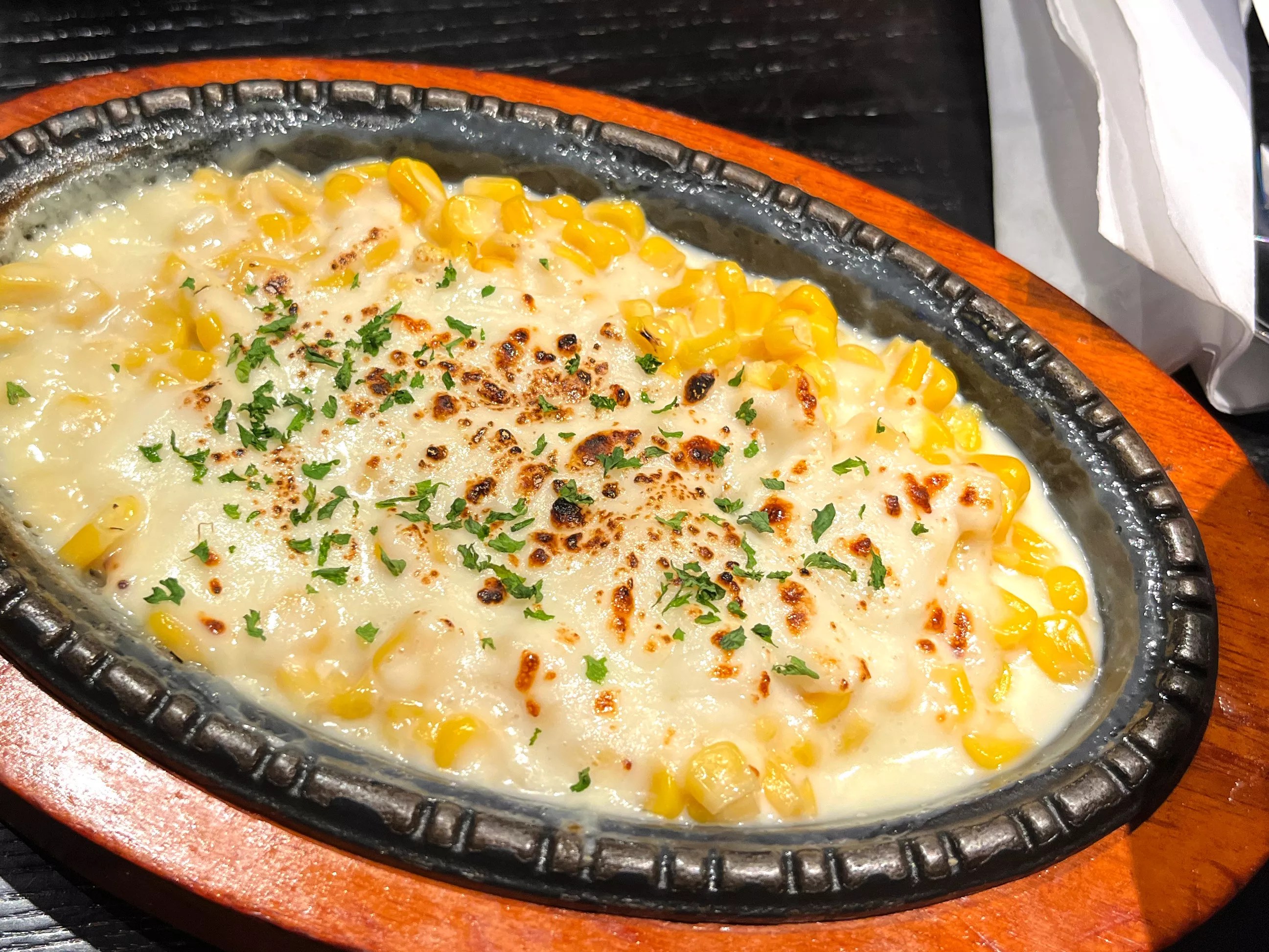
Corn cheese might seem gimmicky, but this sizzling mix of canned corn, mayonnaise, mozzarella, and onions is awfully satisfying.
Dominic Armato
In fairness, when Phoenix isn’t breaking my heart, it’s slowly unfurling its proverbial wings, and fire-licked meat sometimes seems as good an entry point as any. The fact that there’s room for upscale Korean barbecue like Smoking Tiger says a lot about how far things have come, and while I can’t recommend it without reservations, I feel comfortable saying that it’s one of the few KBBQ joints in town that is worth your attention.
Put another way, I maintain that Phoenix needs to get over its laser-focused meat lust. There are too many Korean BBQ restaurants in the Valley, but I’m glad Smoking Tiger is one of them.
Smoking Tiger Korean BBQ
4:30 p.m. to 10 p.m. Monday through Thursday; 11:30 a.m. to 10:30 p.m. Friday and Saturday; 11:30 a.m. to 9 p.m. Sunday
1919 South Gilbert Road, Mesa
602-851-1877
www.smokingtigerbbq.com
Appetizers $10-$18; Meats $25-$48; Meat Combos (2-4 diners) $65-$135; Other Mains $11-$19.